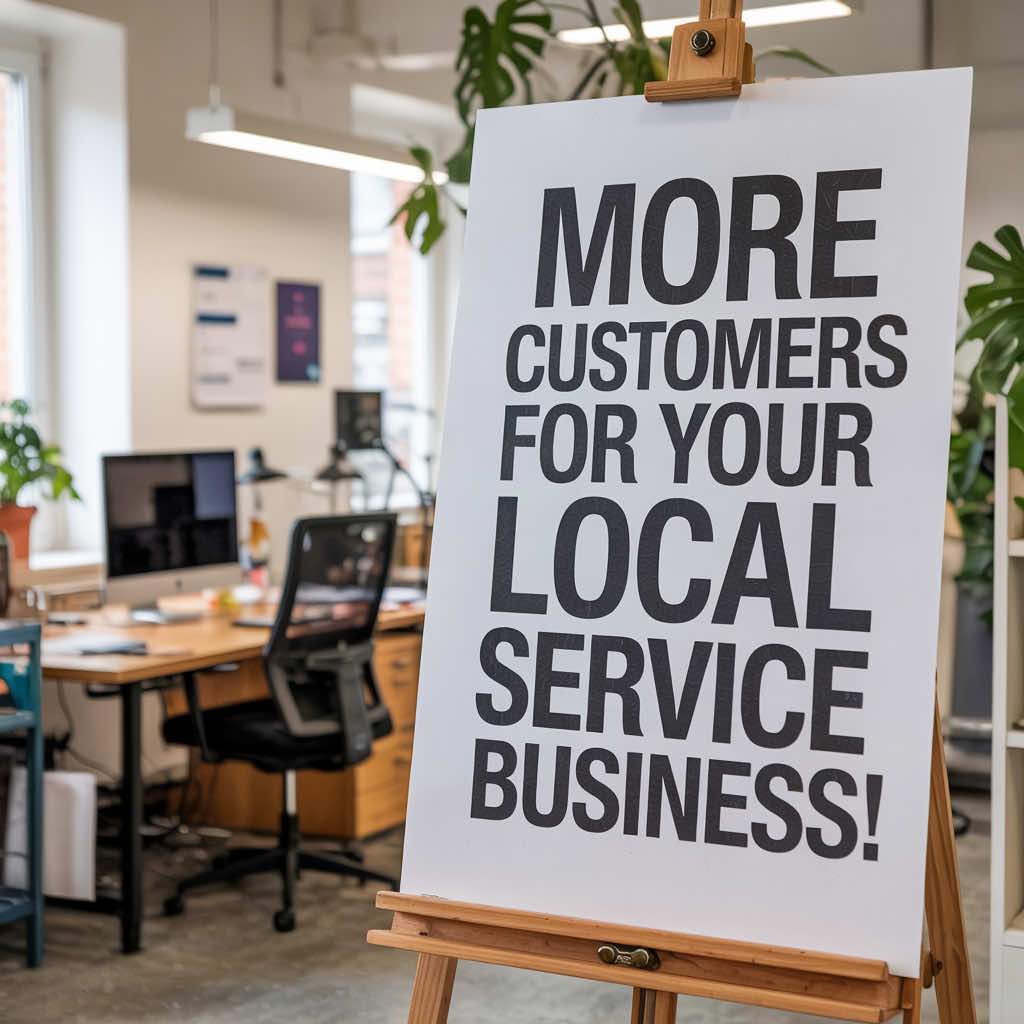
In today's digital-first world, local service businesses – plumbers, electricians, HVAC technicians, roofers, cleaners, and more – can no longer rely solely on word-of-mouth or traditional advertising. Your potential customers are online, searching for reliable providers right now. If you're not visible where they're looking, you're losing business. This guide explores the essential strategies for effective local service business marketing in 2025, ensuring you not only get found but also chosen. Mastering your online presence isn't just an option; it's the foundation for sustainable growth.
We'll cover the critical components: optimizing your Google Business Profile, leveraging targeted paid advertising like Google LSA and Facebook Ads, ensuring your website converts visitors, and why a comprehensive strategy beats piecemeal efforts every time.
The statistics paint a clear picture: your customers live online. Consider that nearly half (46%) of all Google searches have local intent. People aren't just browsing; they're actively seeking solutions nearby. In the US, a staggering 80% of consumers search online for local businesses every week, with 32% doing so daily.
Mobile search is particularly dominant. Searches including "near me" or "close by" continue to surge, increasing significantly year over year. Critically, these aren't passive searches. Around 88% of consumers who search for a local business on a mobile device will call or visit that business within 24 hours. If your business isn't easily found in these moments, the opportunity vanishes instantly.
Furthermore, your online presence directly impacts trust. Consumers are roughly 2.7 times more likely to consider your brand reputable if you have a complete Google Business Profile. Online reviews are paramount; 91% of consumers agree local reviews impact their perception of brands, and 83% use Google specifically to evaluate local businesses. Seeing primarily negative reviews causes 63% of consumers to lose trust. The message is clear: being invisible or poorly represented online is detrimental.
Your Google Business Profile (formerly Google My Business) is arguably the most critical element of your local online presence. It's the free listing that appears in Google Search results and, crucially, in the Google Maps "Local Pack" or "3-Pack" – the map and three business listings prominently displayed for local queries. Visibility here is gold.
Studies show GBP listings can capture a significant portion, potentially 40-60% or more, of clicks for local service searches. For many service businesses, GBP is the primary driver of organic first-time calls, sometimes accounting for 60-70% of leads. Verified and optimized profiles receive significantly more views and interactions. On average, a verified GBP gets around 200 interactions per month, with nearly half being website clicks.
Optimizing your GBP isn't a one-time task. Key ongoing strategies include:
While GBP focuses on organic visibility, paid advertising provides immediate reach and targeted lead flow. For local service businesses, two main platforms dominate: Google and Facebook.
Google offers two primary ad types relevant to service providers:
Don't underestimate Facebook and Instagram for reaching local homeowners. With billions of active users, these platforms allow for powerful targeting based on demographics, interests, behaviors (like homeownership), and location.
While GBP and ads drive visibility, your website is often where potential customers go to learn more and make a final decision. It's your digital storefront and needs to be professional, informative, and built to convert.
Key elements for a service business website include:
For paid ad campaigns, sending traffic to dedicated landing pages often yields better results than sending visitors to your general homepage. Landing pages are focused on a single offer or service with a clear conversion goal. While average website conversion rates hover around 2-5%, well-optimized landing pages can achieve significantly higher rates, with an average around 9.7% reported in some studies. Businesses using more landing pages (e.g., 31-40) generate substantially more leads than those using only a few.
Navigating GBP optimization, LSA setup, Google Ads bidding, Facebook targeting, website conversion, and SEO requires expertise and consistent effort. Many service business owners lack the time or specialized knowledge to manage all these channels effectively. This is where partnering with a marketing agency specializing in local service business marketing becomes crucial.
Fragmented efforts – doing a bit of SEO here, boosting a Facebook post there – rarely deliver significant results. A comprehensive, integrated strategy ensures all channels work together synergistically.
A truly effective approach recognizes that these channels are interconnected. Positive reviews on GBP boost LSA rankings. Website content optimized for local keywords improves both organic and GBP visibility. Data from Google Ads can inform Facebook targeting. A marketing partner focused on local service business marketing understands these dynamics and builds a cohesive plan.
Look for a partner who:
The way customers find and choose local service providers has fundamentally shifted online. Ignoring your digital presence means ignoring your primary source of potential new business. Effective local service business marketing isn't an expense; it's an investment in predictable growth.
By optimizing your Google Business Profile, strategically utilizing Google Ads and LSA, reaching homeowners on Facebook, and ensuring your website converts visitors into leads, you can build a powerful engine for attracting new customers. Whether you tackle this in-house or partner with specialists, taking control of your online visibility is essential for thriving in 2025 and beyond. Don't let your competitors capture the leads that should be yours.